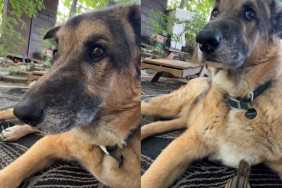A dog house can be useful if you’re often out during the day. They give your dog a den of his own, and some relief from rain and wind. That said, there really are no dogs who like being “outside” dogs. Dogs don’t tolerate cold or heat well, and they’re highly social and easily become bored and lonely if left in a yard for long. They’re also more likely to be well behaved if they can spend time, and tune into the rhythm, of their family.
The right dog house
Most must be assembled by you because they’re too big to ship full size, but usually the only tool you need is a screwdriver. Features of a good dog house include:
- Insulation to withstand extreme climates, both hot and cold.
- Optional doors that can be closed for cold weather
- Raised floors keep water and mud from rolling in and separate your dog from the cold ground
- Easy cleaning by lifting off the roof.
- Awnings that can be attached for shade
Sizing
Dog houses should be roomy enough for your dog to stand, sit, and turn around in comfortably.
Safety concerns
- Never leave a dog outside unattended when it’s hot or cold. Not only is it cruel, it’s very dangerous. Dogs are susceptible to heat stroke, hypothermia, and, of course, can freeze to death.
- Test the stability before placing your dog in a house. Lean on the roof, open the doors, and knock it around to make sure it’s solid.
- Look for any nails or screws that stick out, and then remove them or hammer them in.
Products that complement your dog house
- Find a washable flat pad you can put on the floor of the house to keep your dog more comfortable and warm. An old blanket is fine, too. Make sure to wash the pad or blanket every week or so.
- An awning that provides shade can make the difference between comfort and heat exhaustion.









